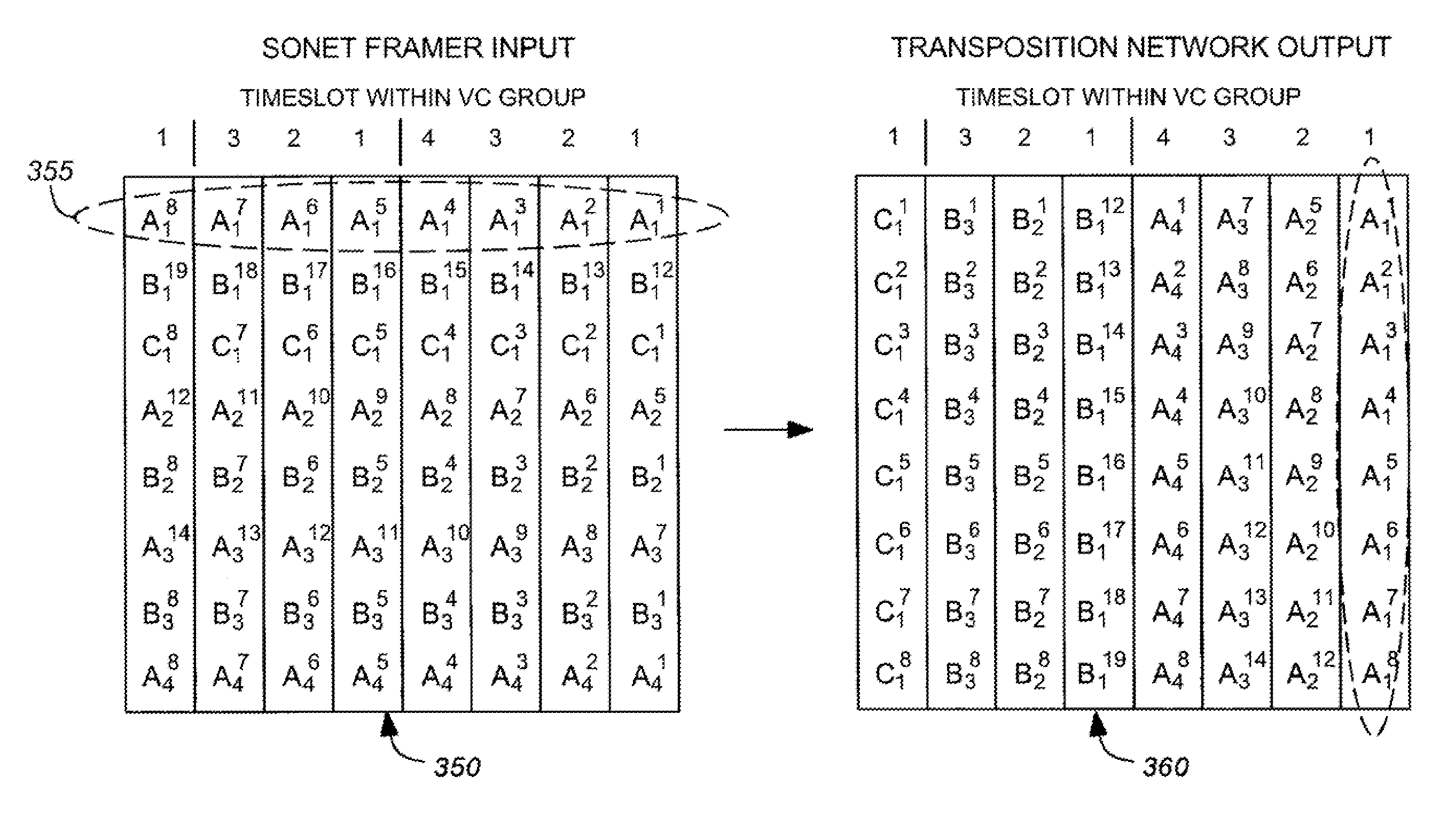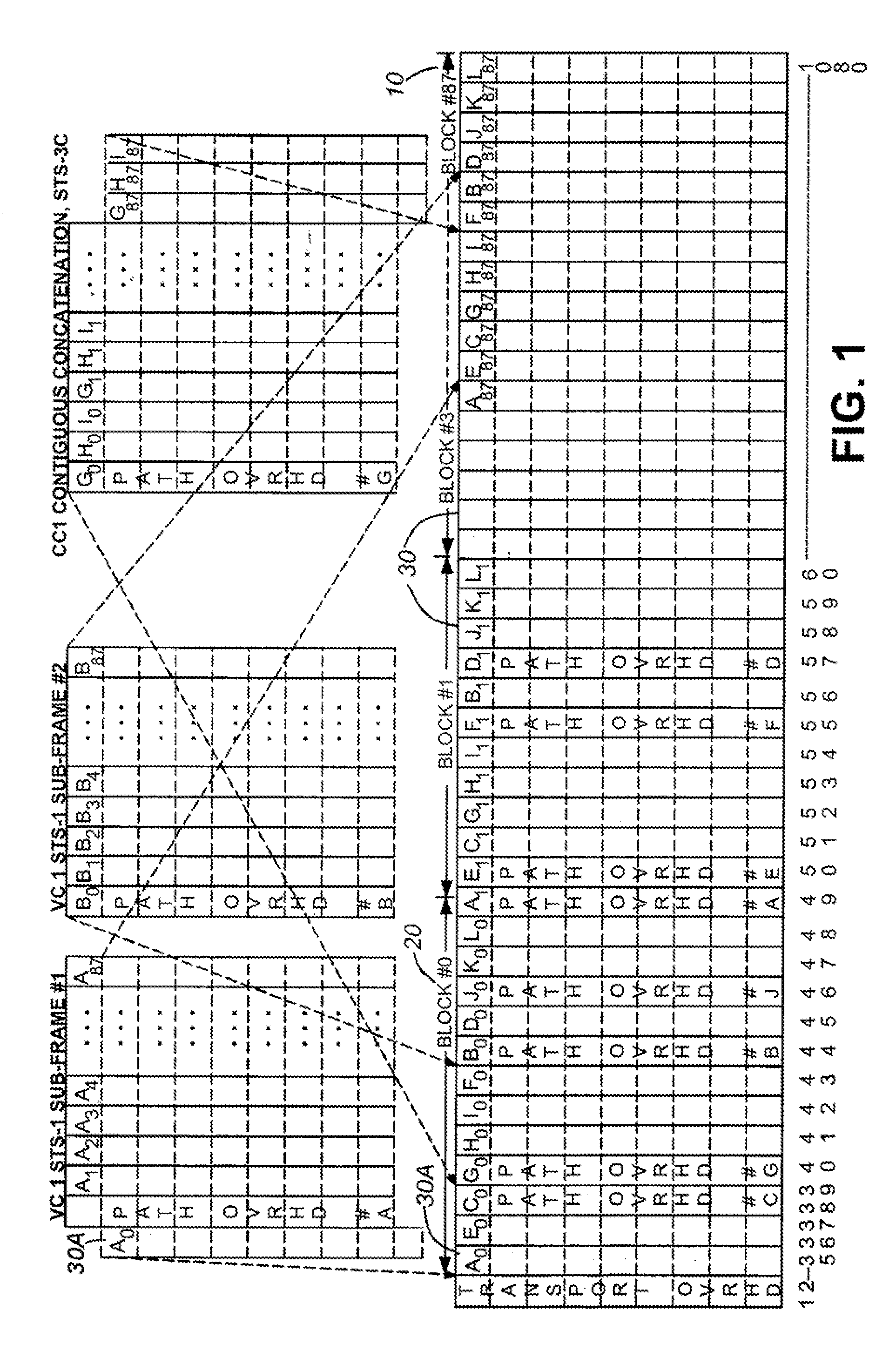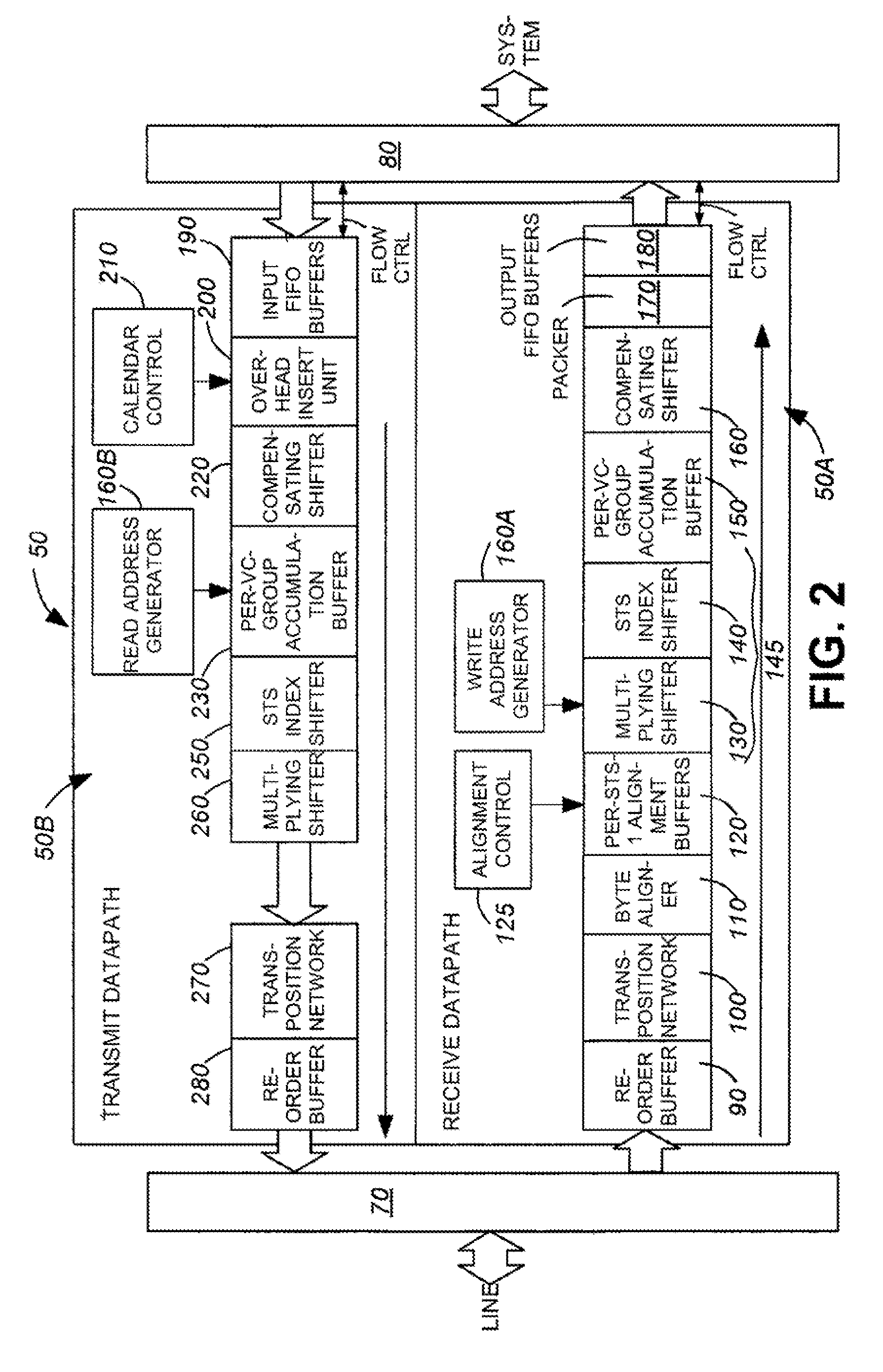Efficient virtual concatenation datapath for SONET/SDH
a virtual concatenation and datapath technology, applied in the direction of multiplex communication, time-division multiplex, electrical apparatus, etc., can solve the problems of affecting the efficiency of the data transfer process, arbitrary differential delay, and large restriction of the number of different signals that may be combined into one link, so as to eliminate the arbitrary differential delay
- Summary
- Abstract
- Description
- Claims
- Application Information
AI Technical Summary
Benefits of technology
Problems solved by technology
Method used
Image
Examples
Embodiment Construction
[0041]FIG. 1 illustrates an example of a SONET frame 10 containing both contiguously concatenated (CC) and virtually concatenated (VC) sub-frames of data. FIG. 1 represents an OC-12 frame 10 that consists of 3 VC frames and 1 CC frame in 12 timeslots. The 3 VC frames each contain sub-frames. In FIG. 1, the first two sub-frames of the first VC frame are shown. The two first sub-frames are labeled as VC1 STS-1 sub-frame#1, VC1 STS-1 subframe#2, respectively. The first sub-frame, VC1 STS-1 sub-frame#1, has both an overhead portion and a payload portion, 87 columns by 9 rows, as is required by the SONET protocol. The columns of the payload and the overhead portions of the first sub-frame, VC1 STS-1 sub-frame#1, are labeled A0, A1, A3, . . . , A87. The second sub-frame 1, VC1 STS-1 subframe#2, is comprised of columns labeled B1, B2, . . . , B87. The first VC frame consists of a third and a fourth sub-frame, not shown in FIG. 1. However, the data columns of the third sub-frame and the fou...
PUM
 Login to View More
Login to View More Abstract
Description
Claims
Application Information
 Login to View More
Login to View More - R&D
- Intellectual Property
- Life Sciences
- Materials
- Tech Scout
- Unparalleled Data Quality
- Higher Quality Content
- 60% Fewer Hallucinations
Browse by: Latest US Patents, China's latest patents, Technical Efficacy Thesaurus, Application Domain, Technology Topic, Popular Technical Reports.
© 2025 PatSnap. All rights reserved.Legal|Privacy policy|Modern Slavery Act Transparency Statement|Sitemap|About US| Contact US: help@patsnap.com



